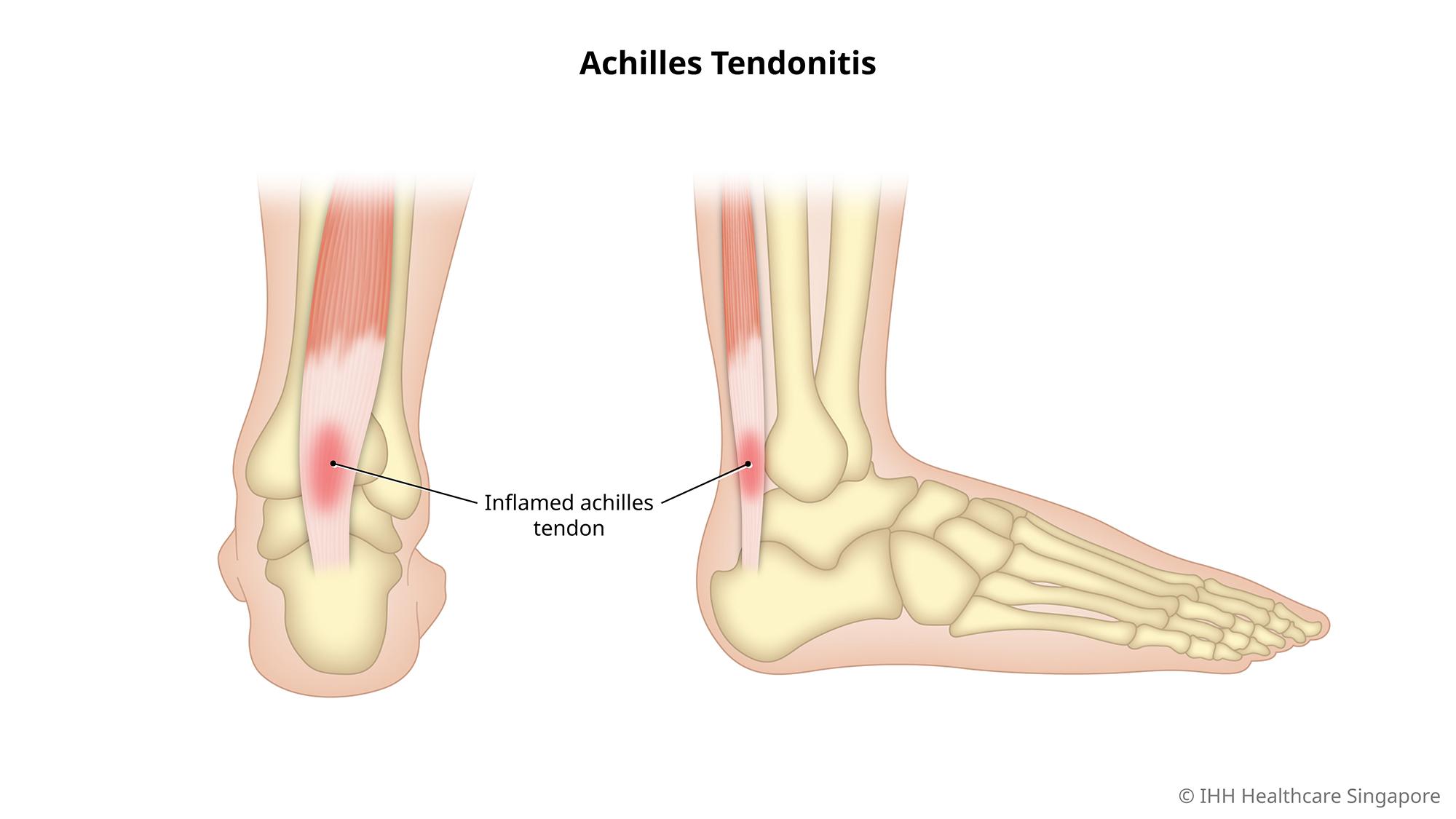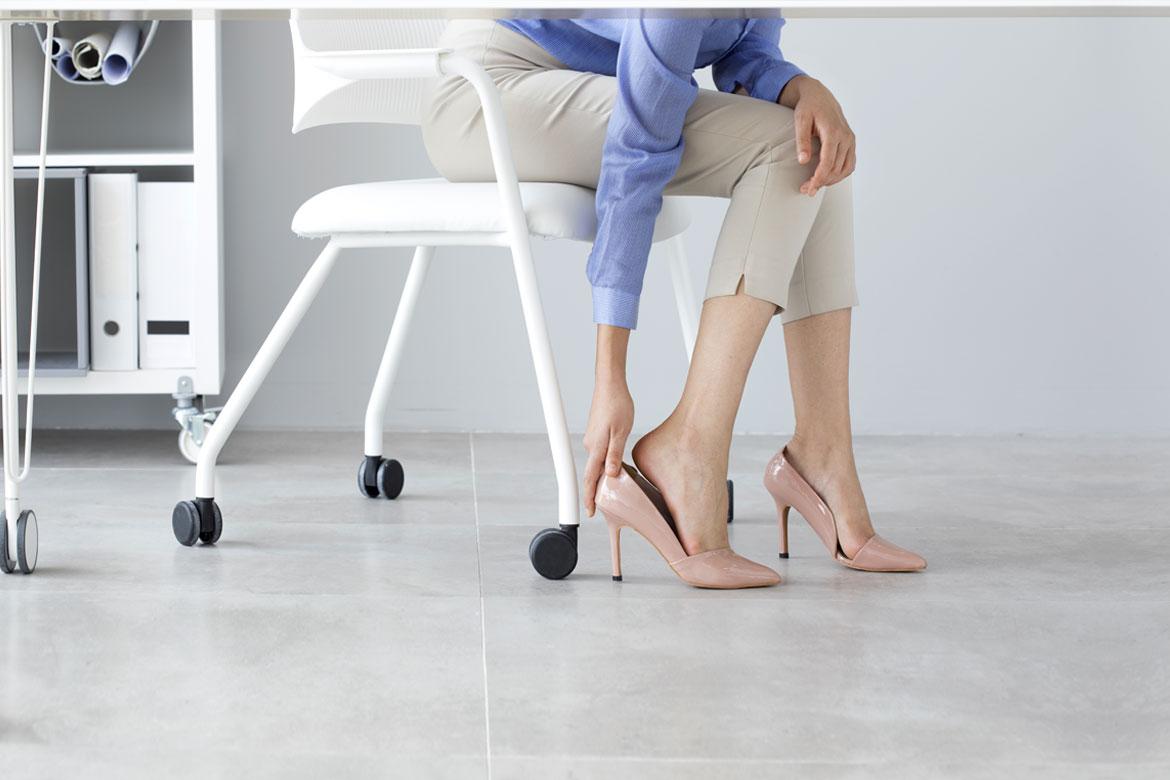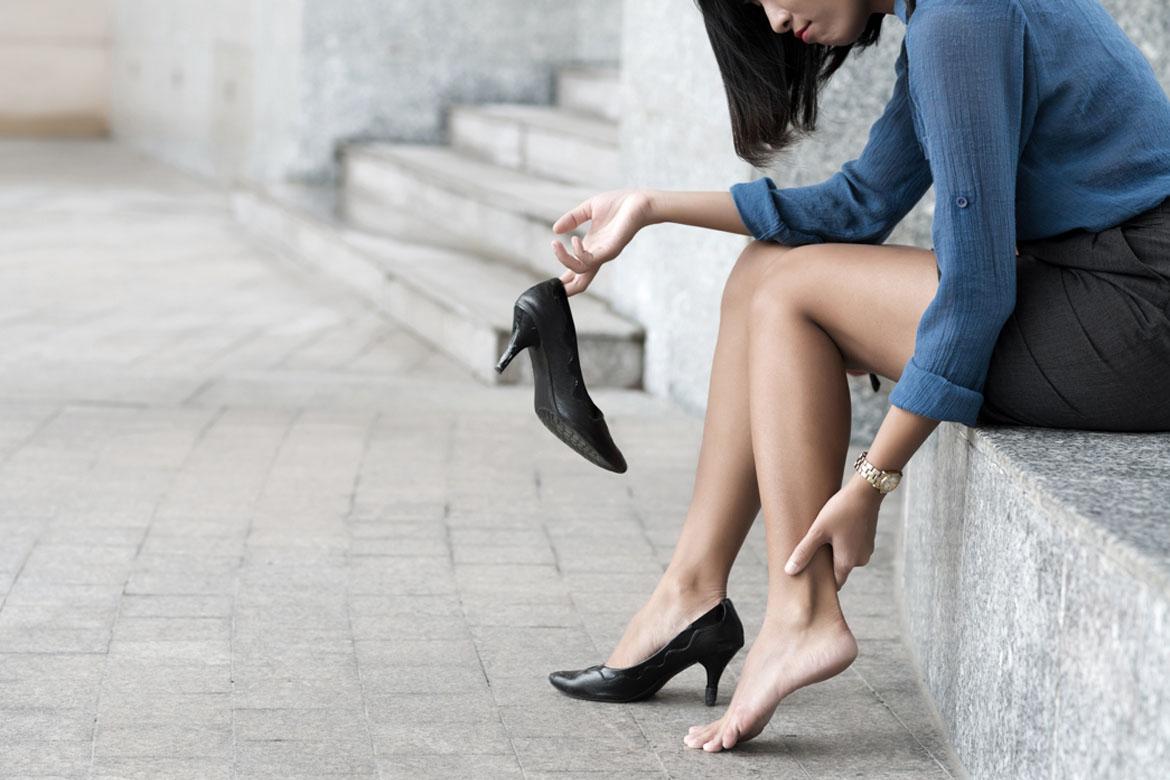-
-
Featured Care Areas

Achilles Tendonitis
What is Achilles tendonitis?
Achilles tendonitis is an injury to the Achilles tendon.
The Achilles tendon is at the back of the ankle, connecting the calf muscles to the heel bone. It is the largest tendon in the body and is needed for walking, running and jumping. It withstands a large amount of stress during normal daily activities.
Achilles tendonitis occurs when the muscles and the Achilles tendon are overused, causing irritation and swelling of the tendon.
Types of Achilles tendonitis
- Insertional Achilles tendonitis affects the lower part of the tendon where it attaches to the heel. This can occur at any age.
- Non-insertional Achilles tendonitis affects the middle part of the tendon and causes swelling and thickening in this area. This is most common among young and active people.
Hardening (calcification) of the damaged tendon fibres can occur in both types of Achilles tendonitis.
What are the symptoms of Achilles tendonitis?
If you have Achilles tendonitis, you are likely to experience heel pain and swelling at the back of the heel.
Consult your doctor if you:
- Cannot bend your ankle
- Cannot walk comfortably on the affected side
- Experience swelling in your calf
- Have an injury that causes deformity around the joint
- Have ankle pain at night or while at rest
- Have ankle pain for more than a few days
- Experience signs of infection, including fever, redness or warmth at the back of your heel
What causes Achilles tendonitis?
Achilles tendonitis is usually caused by:
- Overuse or continuous stress (repetitive, small impact) on the affected area
- Sudden injury
What are the risk factors for Achilles tendonitis?
Risk factors for Achilles Tendonitis include:
- Age. Achilles tendonitis is more likely to occur in older persons.
- Bone spurs. These bony growth form at the back of the heel and irritate the Achilles tendon, causing pain and swelling. This is also more likely with age.
- Gender. Achilles tendonitis is more common in men.
- High impact sports or activities. The repeated impact of jumping and landing in sports like basketball or running on hard surfaces can injure the Achilles tendon.
- Intensive activity. Running too much, suddenly increasing the level of activity or running on hilly terrain can increase the risk of tendon strain or injury.
- Certain medical conditions. Individuals with psoriasis or high blood pressure have a higher risk of developing Achilles tendonitis.
- Certain medications. Fluoroquinolones, a type of antibiotics, is linked to higher rates of Achilles tendonitis.
- Obesity. Additional weight increases the risk of tendon strain.
- Physical traits. Flat foot arches place more strain on the Achilles tendon.
- Poor stretching or warming up prior to exercise. Tight calf muscles contribute to strained tendons.
- Worn-out shoes. Poor support contributes to strained tendons.
What are the complications and related diseases of Achilles tendonitis?
Achilles tendonitis may cause your Achilles tendon to rupture. This refers to a partial or complete tear of the tendon. This usually causes a severe and sharp pain, requiring surgery for treatment.
In general, surgery carries risks such as bleeding, infection or complications from anaesthesia. Other complications from tendon repair surgery may include:
- Nerve damage
- Difficulty healing
- Weakness in the calf
- Continued or recurring pain in the foot and ankle
You may also face additional risks depending on your health, age and the condition or shape of your foot, leg muscles and tendons. These may also affect your surgery options.
Speak to your doctor for more information on the risks and procedures that are recommended for you.
How do you prevent Achilles tendonitis?
To reduce your risk of heel pain and injury to your Achilles tendons:
- Alternate activities. Switch between high-impact activities like running and basketball, and low-impact activities such as swimming and cycling. This is to prevent undue strain on the Achilles tendon.
- Make gradual changes to the frequency and intensity of your activities. If you are just beginning a new sport or exercise regime, start slowly before moving on to more advanced levels.
- Practise moderation. Avoid activities that place excessive strain on the tendons, such as hill running. Stop the activity if you feel pain.
- Stretch daily. Frequent stretching, not just before and after exercise, will help maintain the flexibility of your calf muscles.
- Strengthen calf muscles. This will help the Achilles tendon handle the stress of daily activity and exercise.
- Warm up thoroughly. Stretch your muscles well, especially before strenuous exercise.
- Wear supportive shoes. Shoes that offer good cushioning and arch support reduce strain on the tendon. Alternatively, use orthopaedic inserts such as arch supports in your shoes.
This page has been reviewed by our medical content reviewers.
Need help?
For enquiries, please call
+65 6575 7575
For appointment bookings, please WhatsApp
+65 8111 9777





